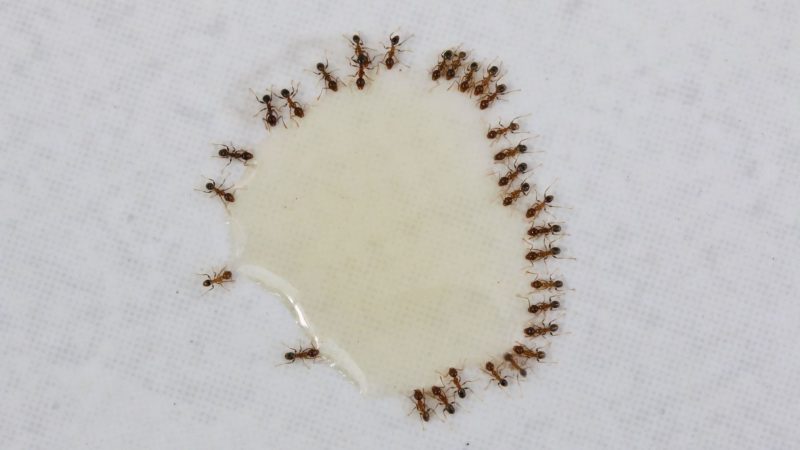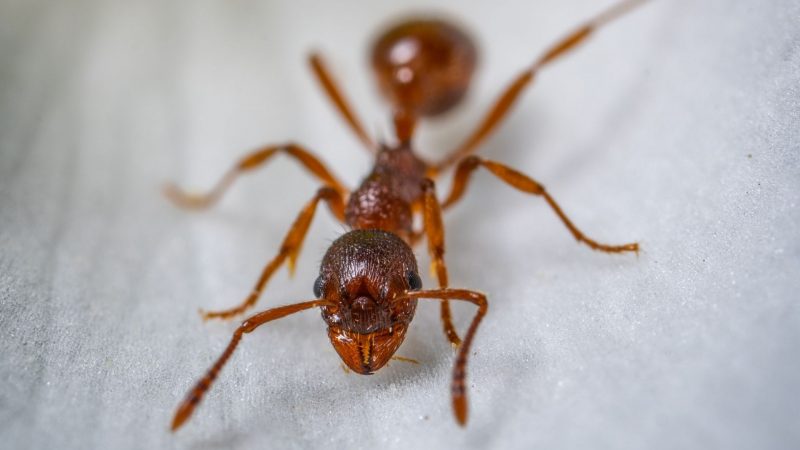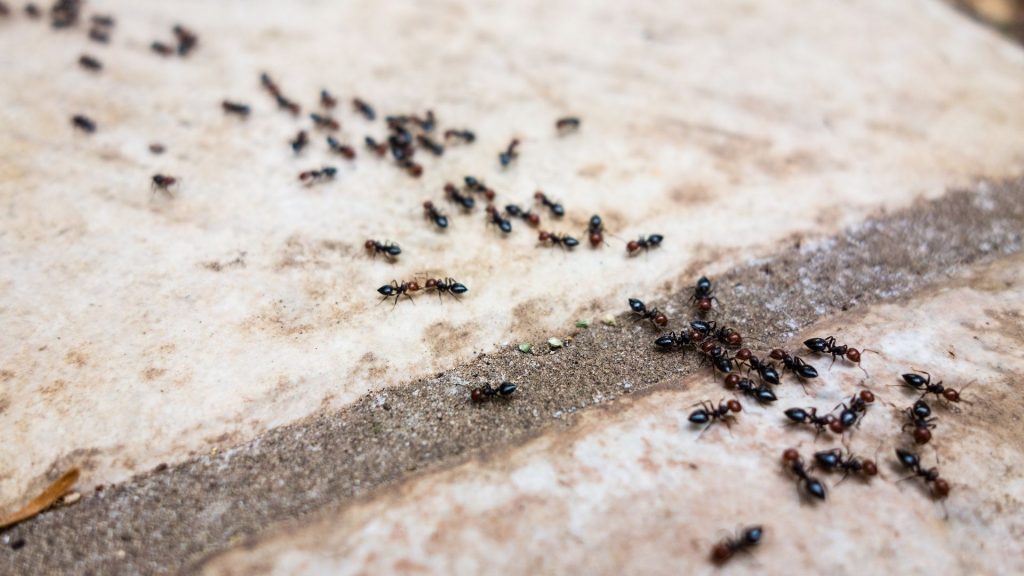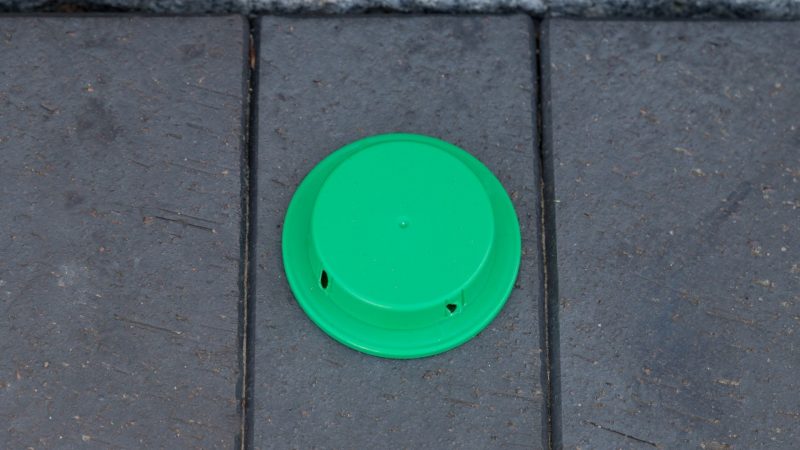Getting rid of ants from the carpet could be difficult and frustrating, especially if they occur in large numbers. When overlooked, ants could also take refuge in other areas of your house and cause a great deal of damage in the long run.
How to get rid of ants on the carpet? One of the most effective ways is using ant baits. As opposed to ant sprays which only target foraging worker ants, ant baits exploit their natural foraging behavior, making it an effective method of eliminating the entire colony.
Ants are one of the most common pests that you may find scurrying around the kitchen, the bathroom, or any other place where there’s plenty of food for them to thrive. In this article, you will explore in detail how you can effectively get rid of ants in your carpet using ant baits.
Table of Contents
How to Use Ant Baits?

Ant baits are a mixture of insecticide (toxicant) and food (attractant), which are intended to attract foraging ant workers. Although ant baits are less toxic, these should not be placed in areas accessible to humans and pets. Below are some important things to consider when using this method:
1. Ant Inspection

It is important to identify which indoor ant species are infesting your carpet, as some ant baits only work on certain species of ants. Here’s the description of some of the common household ants:
Pharaoh Ants
Although they are occasionally found outdoors, pharaoh ants prefer nesting indoors, especially on warm surfaces with nearby sources of water. These ants are very small, about 1/12 to 1/16 inch long, and have a light tan to reddish color.
Red Imported Fire Ants
Foraging fire ants are 1/16 to 3/16 inch long and have a reddish to dark brown color.
Carpenter Ants
Carpenter ants are easily distinguishable due to their dull red bodies and black abdomens. Worker ants are 1/4 to 1/2 inch long.
Argentine Ants
These ants commonly take refuge in both indoor and outdoor areas and appear in light to dark brown color.
Big-headed Ants
Bigheaded ants are attracted to sweets and greasy floors. Worker ants are 1/6 to 1/14 inch long, with its head relatively larger compared to the size of its body.
Related: Types of Ants That Invade Homes | Identification and Control Guide
2. Bait Placement

The success of this management practice lies in the proper placement of baits since what do you want to happen is for it to draw worker ants in, have them collect the bait, bring the bait back to their nest, and feed them to the queen and the rest of the brood.
Ant baits placed beside ant trails are often the most effective. It is important to be able to identify and inspect the ant trails used by worker ants when searching and transporting food back to their nest.
Using baits would require a lot of patience. Worker ants may initially take a random search pattern before establishing a shorter route from the food source to their nest. So close observation must be carried out.
3. Amount of Bait

Initially, when using ant baits, you may notice that the number of ants foraging over the bait increases. This should not be a cause of concern since it only means that the ants are attracted to the bait that you are using. Hence, these worker ants are recruiting more foragers since there is a new source of food to take from.
Since baits take time to work, it is then important to regularly check and ensure that the bait isn’t depleted. If the source of food is left empty, then the surviving ants will start searching for other areas. Thus, repeating the process of ant trail inspection is a must.
4. Bait Active Ingredient
Although ants have certain nutritional needs, they still would tend to feed on whichever food is available. However, it is also important to consider the bait mixture when using this method.
Baits should be slow-acting such that it would give foraging ant workers enough time to carry these baits back to their nest and be able to share the food. If ant foragers would die before reaching the nest, then the queen and the rest of the colony members would survive and in no time would only replace those who have been killed previously.
With that being said, you can take a look at some types of ant baits in the next section.
Types of Ant Baits

Being aware of the types of baits available is also important since some might not work or might not be as effective as others, especially in drawing the attention of foraging ants.
Ant baits may be in the form of liquid and gel baits, which are commonly used to treat household ants. The consistency of these products is highly maintained to make it easy for foraging ants to bring it back to the nest and share it with the rest of the colony members.
1. Bottles, Tubes/Syringes
Liquid and gel baits are usually sugar-based and may be packaged in small bottles, tubes, or syringes. To use these baits, a small amount (pea-size drop) is usually placed on the top of the non-sticky side of a masking tape, wax paper, or small pieces of the product packaging.
Take a look at some commonly purchased products:
| Product | Net Wt. | Active Ingredient | Effective Against |
| TERRO Liquid Ant Killer | 2 fl oz (56g) | Borax | Argentine, big-headed ants, corn field ants, crazy ants, ghost ants, little black ants, odorous house ants, pavement ants, white-footed ants, and other sweet-eating ants. |
| Maxforce Quantum | 4.23 oz (120g) | Imidacloprid | Argentine ants, Pharaoh ants, ghost ants, black garden ants, odorous house ants, and crazy ants. |
| Combat Ant Killing Gel | 0.95 oz (27g) | Fipronil | Carpenter, Pharaoh, Argentine, cornfield, odorous house, thief, pavement, white-footed, and little black ants. |
| Optigard Ant Bait Gel | 1.06 oz (30g) | Thiamethoxam | Argentine, carpenter, odorous house, ghost, and other ant species. |
| Syngenta Advion Ant Gel | 1.06 oz (30g) | Indoxacarb | Targets most pest species of ants, including all key sweet feeders. |
| Raid Ant Gel | 1.06 oz (30g) | Thiamethoxam | Argentine ants, carpenter ants, crazy ants, ghost ants, and odorous ants (excluding fire, Pharaoh, and harvester ants). |
2. Pre-filled Plastic Stations
Liquid and gel baits also come in pre-filled plastic stations that are convenient and easy to use. One good thing about using pre-filled bait stations is that it prevents drips, spills, and floor mess since ants are taken into a station where the bait can be found.
These ant baits are readily available in physical and online stores. Below are some of the most popular consumer brands.
| Product | Net Wt. | Active Ingredient | Effective Against |
| Raid Max Double Control Ant Baits | 0.28 oz (8g) | Avermectin | Argentine ants, cornfield ants, black carpenter ants, Pharaoh ants, and a wide variety of household ants. |
| TERRO Multi-Surface Liquid Ant Baits | 0.48 fl oz (14.2g) | Borax | Argentine, big-headed ants, cornfield ants, crazy ants, ghost ants, little black ants, odorous house ants, pavement ants, white-footed ants, and other sweet-eating ants. |
| Combat Max Ant Killing Bait Stations | 0.21 oz (6g) | Fipronil | Carpenter, Pharaoh, Argentine, cornfield, odorous house, thief, pavement, white-footed, and little black ants. |
Although these products seem to be very convenient to use, it is advisable to follow the label directions of the product you are using for safety purposes. Label directions would also indicate which ant species these baits are most effectively used and whether these are suitable for both indoor and outdoor applications.
Moreover, it is important to read the label to check whether the product you are buying contains a slow-acting insecticide.
3. Homemade Ant Bait
We already mentioned that ant baits consist of food or the attractant and insecticide or the toxicant. One homemade recipe that you can use to make your own ant bait is by using a combination of any food material (usually sugar-based) and boric acid. To do this, you can follow the steps below:
Step 1: You may use peanut butter, mint, apple jelly, or corn syrup, whichever food material is readily available.
Step 2: Per 100 parts (2 cups) of bait material, mix 1 part (1 teaspoon) of boric acid.
Step 3: To create your own bait station, you can place small quantities of this bait mixture in bottle caps or pieces of foil.
Step 4: Follow the process of identifying bait placement as described above.
Here is a sample video on how to make a boric acid mixture to use as an ant bait:
Why Ants Hide in the Carpet?

In order to prevent the ants from coming back, it is important to have an idea of how ants survive and why ants are able to thrive in your carpet. As with any other insects, ants need food, water, and shelter to survive.
1. Food and Water
Primarily, ants need food and water to survive. Finding them in your carpet could be an indication of food crumbs that clung to the carpet fibers, liquid residue in the carpet, or both. The presence of crumbs and moisture in the carpet attracts not only ants but also other pests because food and water are readily available.
2. Shelter
Ants are often found indoors not only because food and water are available but because indoor sites are sometimes more suitable for breeding than outdoors. Ants often take refuge in areas where they could not be easily spotted. Thus, these ants may, in fact, be harboring under your carpet.
List of Sources
Ant Baits: A Lease-Toxic Control
Ant Bait for Small Household Ants